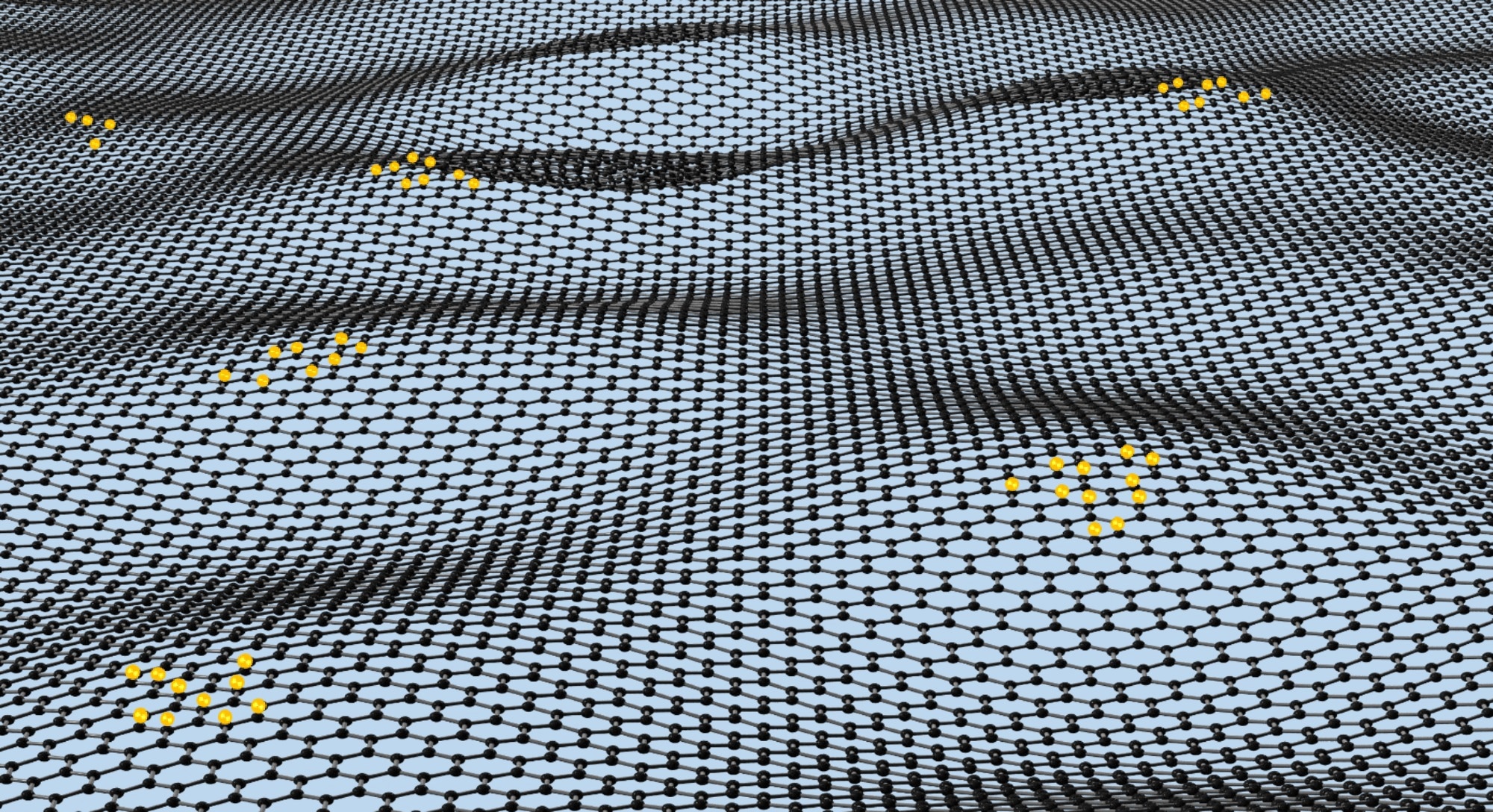Despite assumptions that carbon sheets are as equally chemically inert as the bulk graphite from which they are extracted, it has now been discovered that graphene can be a catalyst. This was found by a team of scientists headed by Prof. Andre Geim from the National Graphene Institute (NGI).

Rippled graphene with dissociated hydrogen atoms on top. Image Credits: The University of Manchester
The research was published in the Proceedings of the National Academy of Sciences (PNAS). It has revealed that graphene possessing nanoscale corrugations on its surface could expedite both hydrogen splitting and ideal metallic-based catalysts. This characteristic could possibly exist in every two-dimensional material that is inherently non-flat.
The Manchester team, in association with scientists from China and USA, performed a series of experiments to reveal that the non-flatness of graphene allows it to be a strong catalyst. Firstly, with Raman spectroscopy and ultrasensitive gas flow measurements, they established that nanoscale corrugations of graphene were related to its chemical reactivity with molecular hydrogen (H2) and that the activation energy for its dissociation into atomic hydrogen (H) was comparatively meager.
The team assessed if this reactivity was sufficient to make the material an effective catalyst. They employed a mixture of deuterium (D2) and hydrogen gases and discovered that graphene acted as a strong catalyst, converting D2 and H2 into HD. This was opposite to the characteristics of graphite and other carbon-based materials in identical conditions.
The gas analyses showed that the quantity of HD produced by monolayer graphene was around the same as for recognized hydrogen catalysts such as magnesium oxide, zirconia, and copper, but graphene was needed only in small quantities, <100 times of the other catalysts.
Our paper shows that freestanding graphene is quite different from both graphite and atomically flat graphene that are chemically extremely inert. We have also proved that nanoscale corrugations are more important for catalysis than the ‘usual suspects’ such as vacancies, edges, and other defects on graphene’s surface.
Dr. Pengzhan Sun, Study First Author, The University of Manchester
“As nanorippling naturally occurs in all atomically thin crystals, because of thermal fluctuations and unavoidable local mechanical strain, other 2D materials may also show similarly enhanced reactivity. As for graphene, we can certainly expect it to be catalytically and chemically active in other reactions, not only those involving hydrogen.”
2D materials are most often perceived as atomically flat sheets, and effects caused by unavoidable nanoscale corrugations have so far been overlooked. Our work shows that those effects can be dramatic, which has important implications for the use of 2D materials. For example, bulk molybdenum sulfide and other chalcogenides are often employed as 3D catalysts. Now we should wonder if they could be even more active in their 2D form.
Prof. Andre Geim, Study Lead Author, The University of Manchester
Journal Reference
Sun, P. Z., et al. (2023). Unexpected catalytic activity of nanorippled graphene. Proceedings of the National Academy of Sciences. doi.org/10.1073/pnas.2300481120.